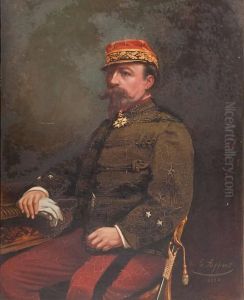E. Appert Paintings
Émile-Justin Appert was a French photographer and artist, born in 1814 in France. Although not as widely recognized as some of his contemporaries, Appert's contributions to the early development of photography and its applications, particularly in the realm of historical archiving and documentation, were noteworthy during his time.
Initially, Appert's career began in the arts, where he worked as a lithographer, but with the advent of photography, he became interested in this new medium. By the 1850s, he had established himself as a photographer, and his studio in Paris became known for producing albumen silver prints from glass negatives, a popular photographic process during the mid-19th century.
One of Appert's significant contributions was in the field of photographing historical documents and artifacts. He was among the first to recognize the importance of photography as a tool for the preservation and dissemination of historical records. Appert undertook a massive project to photograph the trials and documents of the French Revolution, creating an extensive archive that served as a valuable resource for historians and scholars.
Throughout his career, Appert continued to innovate, experimenting with various photographic techniques and applications. He also became involved in producing legal evidence photography, which was a novel application of photography at the time. This work highlighted the potential of photography to serve as an impartial and accurate witness in legal cases, a concept that would become increasingly important in the judicial system.
Appert's work extended beyond the technical and commercial aspects of photography. He was also involved in the artistic side of the medium, producing portraits and other works that demonstrated his skill and creativity as a photographer. However, the details of his artistic contributions are less documented compared to his innovations and applications in historical documentation and legal photography.
Émile-Justin Appert passed away in 1890, leaving behind a legacy as an early adopter and innovator in the field of photography. His work provided a foundation for the use of photography in historical and legal contexts, and his efforts in archiving the documents of the French Revolution remain a testament to the importance of preserving history through the lens of technology.


